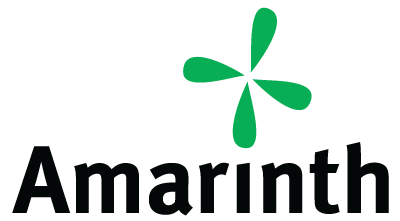Re-engineering is an alternative to pump replacement
FOR IMMEDIATE RELEASE –20th Sep 2004

Re-engineering is an alternative to pump replacement, delivering higher performance with dramatically reduced costs
Many process plants have a life expectancy of over 25 years and during the normal course of operation numerous pump components will need to be replaced. These are usually purchased from the pump manufacturer, but what if that manufacturer is no longer in business or does not have spares for obsolete products? What if a performance increase is needed or new legislation has to be met? Oliver Brigginshaw, Managing Director of Amarinth, a company specialising in the design, application and manufacture of pumps and associated equipment, explores re-engineering as an alternative approach to complete pump replacement.
In a competitive world market, the inevitable company mergers and acquisitions are driving more product rationalisation and quicker obsolescence. With process plant being designed to run for decades before decommissioning, these changes are causing increasing maintenance headaches. It is highly probable that in a system designed more than a decade ago, the critical pumping technology is already obsolete and getting hold of Original Equipment Manufacturer (OEM) spares is becoming increasingly difficult. To add to these problems, increasing levels of legislation and new directives mean that companies have to plan upgrades of their equipment before the end of their working life to comply with health and safety regulations. Failure to respond to these changes in legislation puts companies at risk of significant fines, or worse.
Downtime is critical
Although maintenance schedules exist for the replacement of routine components, when these components can no longer be purchased from the OEM, the alternative is often a total pump replacement. As the plant (pipe-work, mountings, ducting, electrical feeds and other equipment) is frequently designed around a particular pump, such a replacement usually requires a redesign or replacement of many other items and ancillary components.
Although expensive, it is not the actual cost of new pumps or even the cost of redesigning or changing pipe-work or ancillary equipment that is important, but the enormous cost of downtime. Depending on the industry, this could result in losses of £100,000 a day, or £100,000 each shift. In addition, to bring the plant back into operation, recertification of the new equipment may be required, further delaying production and adding another risk.
Reverse engineering only copies weaknesses
For many years, there have been companies replicating common maintenance components (shafts, wear rings, seal and bearing housings etc.) to replace thosesupplied by an OEM. These components are usually manufactured after a process of reverse engineering - that is taking a component and attempting to replicate it in dimension and material as close as possible to the original. Reverse engineering however, not only copies the component, it also copies any inherent weaknesses in the component. In some cases these replicated parts perform on par with the OEM components, but in other cases they cause problems through poor tolerances, inferior materials, quality of manufacture and dimensional fit.
Re-engineering delivers new benefits
With today’s powerful computer aided technologies tumbling in price, the tools are now available to cost effectively design new components that can not only replace OEM components, but actually improve on them. Three-dimensional modelling software allows components to be designed and then assembled digitally. Clash detection and tolerance modelling highlights areas where problems may occur. Sophisticated computational fluid dynamics packages help engineers understand the flow of fluid through and around components allowing a component that was designed many years ago, before such tools may have been used, to be analysed and then re-engineered to deliver an improved performance. Finite element analysis software can read the 3-dimensional models and then stress the components, test different materials, pinpoint fracture points and perform fatigue analysis. Finally, rapid prototype technologies such as stereolithography or Laminated Object Manufacturecan produce components (in a special plastic or film), in full size, directly from the 3-dimensional models, in a matter of minutes, allowing engineers to examine the components before any expensive tooling is committed. The result is re-engineered components that can outperform and outlast the originals.
Such re-engineering is not limited to simple maintenance items. For example, if a company is looking to increase the performance of an existing pump, the impeller could be re-engineered for optimum performance for specific duties which might include enhanced efficiency, better stability and lower Net Positive Suction Head(NPSH). All of this could be carried out within the body of the existing pump, without any need to change pipe-work, mountings or any other ancillary equipment.
Barry Darke, Procurement Specialist at BP Chemicals recalls a problem they faced and how re-engineering delivered the solution: “We had a problem with an existing pump we wanted to use. I called Amarinth to see if they could assist and after an in-depth review of the problem they were able to offer a superior alternative. The problem centred around a volute casing and removable suction cover. BP needed to pump some corrosive chemicals and could not afford any leakage. Amarinth redesigned the two components into a single integrated volute and suction cover which was radiographed and dye tested thus providing no opportunity for any potential leakage or corrosion between the joint faces.”
Impact of the ATEX directive
On the 1st July 2003 the European ATEX 94/9/EC directive, which was named after the French "ATmosphere EXplosive", came into force for those products that are used in a potentially explosive atmosphere. This covers equipment for use in many hazardous applications such as gas, mining, oil, pharmaceutical and chemical production. All pumps installed for use in such an environment must now be ATEX certified. In parallel to ATEX Directive 94/9/EC, there is also Directive 1999/92/EC dealing with the minimum requirements for improving the safety and health protection of workers potentially at risk from explosive atmospheres. In practice, this means that where employees may come into contact with pumps in zones where a potentially explosive atmosphere exists, these pumps may have to be changed to ATEX certified ones.
Having to change a pump to meet the ATEX directive is as damaging to production as when a failure occurs forcing a different pump to be installed. The installation of a new pump will most likely need new pipe-work, mountings and changes of ancillary equipment. Therefore a practical alternative is to modify the existing pump to meet ATEX requirements by using modern computer aided tools to re-design the drive assembly and then retrofit this to bring the pump up to ATEX certification.
A viable alternative to total replacement
Through the application of modern cost effective computer aided technologies, organisations now have a viable alternative to complete pump replacement, whether that is for the supply of maintenance items because of obsolescence, an increase in performance, or to meet new regulations. These can all be achieved working with the existing pump and implemented with no changes to the associated pipe-work, mounting or ancillary items and, most importantly of all, with no more downtime than that required for scheduled maintenance.
Available for download in PDF format, simply click the button below to download.
Download FileNOTES TO EDITORS:

Amarinth is a carbon net zero organisation delivering world-leading expertise in the design, application and manufacture of centrifugal pumps and associated equipment for critical applications in many of the most arduous and hostile environments around the globe.
Founded in 2002, Amarinth has harnessed the skills, creativity and passion of people who have worked in the pump industry for decades, delivering bespoke API and ISO pumps primarily to the offshore and onshore oil & gas industries; nuclear and renewable energy generation; defence; desalination; process and industrial markets.
The company’s innovative approach, business agility and use of sophisticated computer applications enables it to deliver robust, reliable and sustainable pumping solutions on the shortest lead times in the industry.
• Process pumps – API 610, API 685, ISO 5199 horizontal, vertical and in-line bespoke process pumps, including ones that are hydraulically and dimensionally interchangeable with the former Girdlestone and other obsolete pumps.
• Skid packages and modules – Supplied with a variety of drives for applications including de-sanding, mixing, filtration and chemical injection and tailored for the oil & gas, water treatment and power generation industries.
• Condensate recovery – Cutting-edge design providing low NPSH up to 98°C with variable speed drives to reduce cycle time and lower operating costs, available in stainless steel, galvanised or copper tanks for light or heavy industrial uses.
• Seal support – Integrated pressurised and vented seal support systems designed and delivered to API 682 and ISO 5199 standards and specific site specifications and requirements, working closely with AES, Eagle Burgmann, John Crane and Protect System.
• Spare parts – Critical spares for all Amarinth pumps and related components can be dispatched the same day, reducing potential downtime, and in addition components for the former Girdlestone and other obsolete pumps can be re-engineered often improving the performance of existing assets.
• Services – A full range of pump related services, delivered from UK head office or on-site globally, onshore or off-shore, including full commissioning and start-up support; also strip, report and refurbishment of any pump regardless of manufacturer.
Amarinth operates globally from its base in Rendlesham Suffolk, United Kingdom and offices in the Middle East and Malaysia with a global customer base, including BP, Shell, ADNOC, NOV, ExxonMobil, Schlumberger, COSCO, EDF, GlaxoSmithKline, Saudi Aramco, Pfizer, Diageo, Kuwait Oil Company, AMEC, Fluor, LUKOIL, Halliburton, and Babcock.
For further information or photos contact
Comment:
Alex Brigginshaw
Commercial Director
Amarinth Limited
Bentwaters Park, Rendlesham
Woodbridge IP12 2TW
United Kingdom
Tel: +44 (0)1394 462131
Mobile: +44 (0)7703 681821
Alex.Brigginshaw@Amarinth.com
Media Relations:
Phil Harland
B6 Solutions Limited
29 Swan Drive
The Wharf, Aldermaston
Reading RG7 4UZ
United Kingdom
Tel: +44 (0)118 971 3271
Mobile: +44 (0)7880 748380
Phil.Harland@B6solutions.com
















